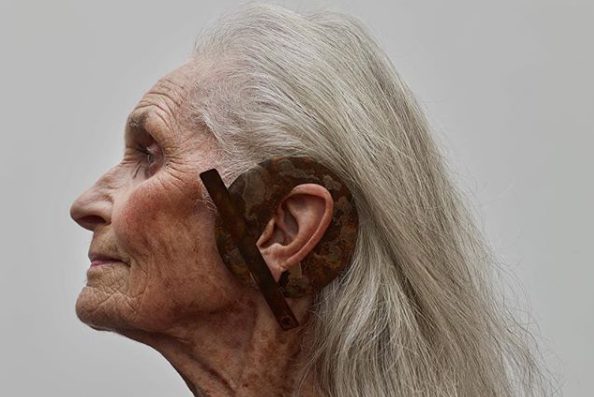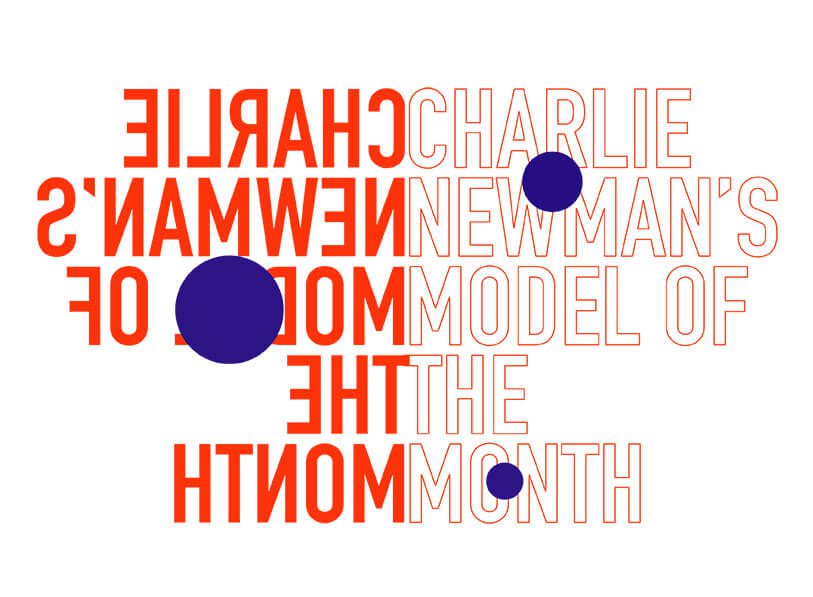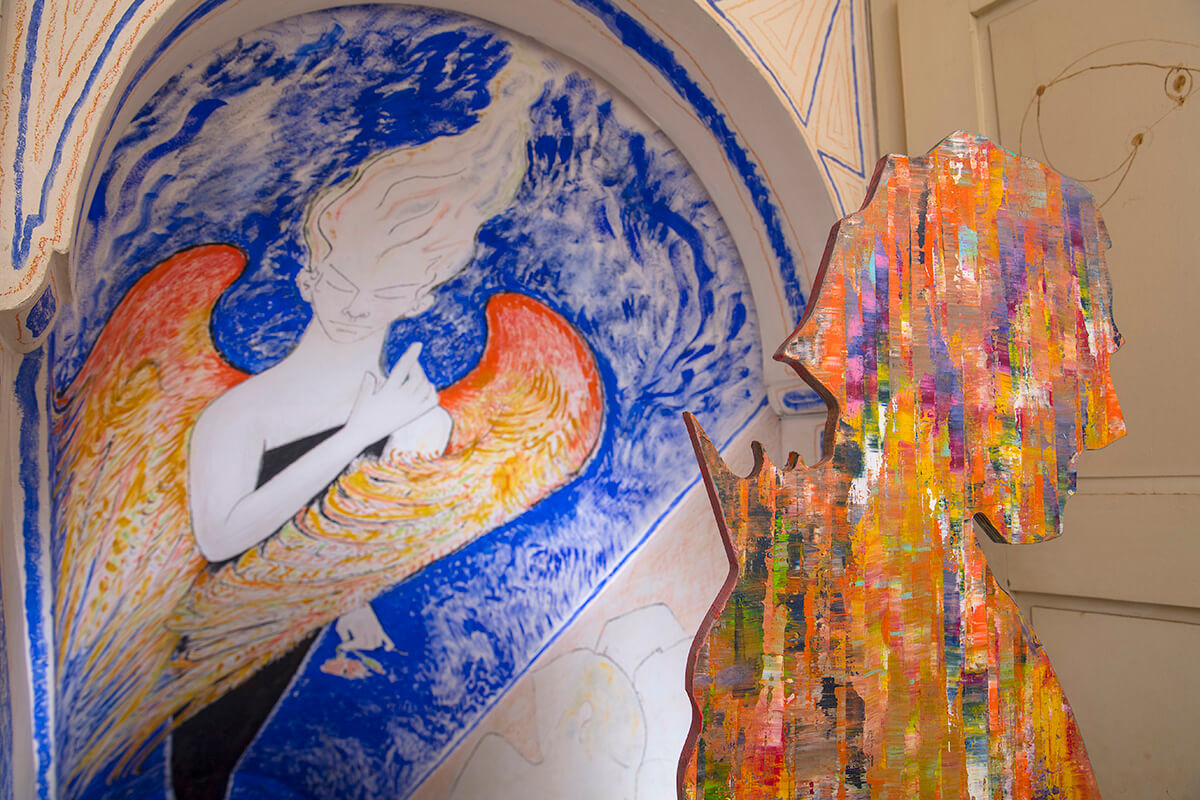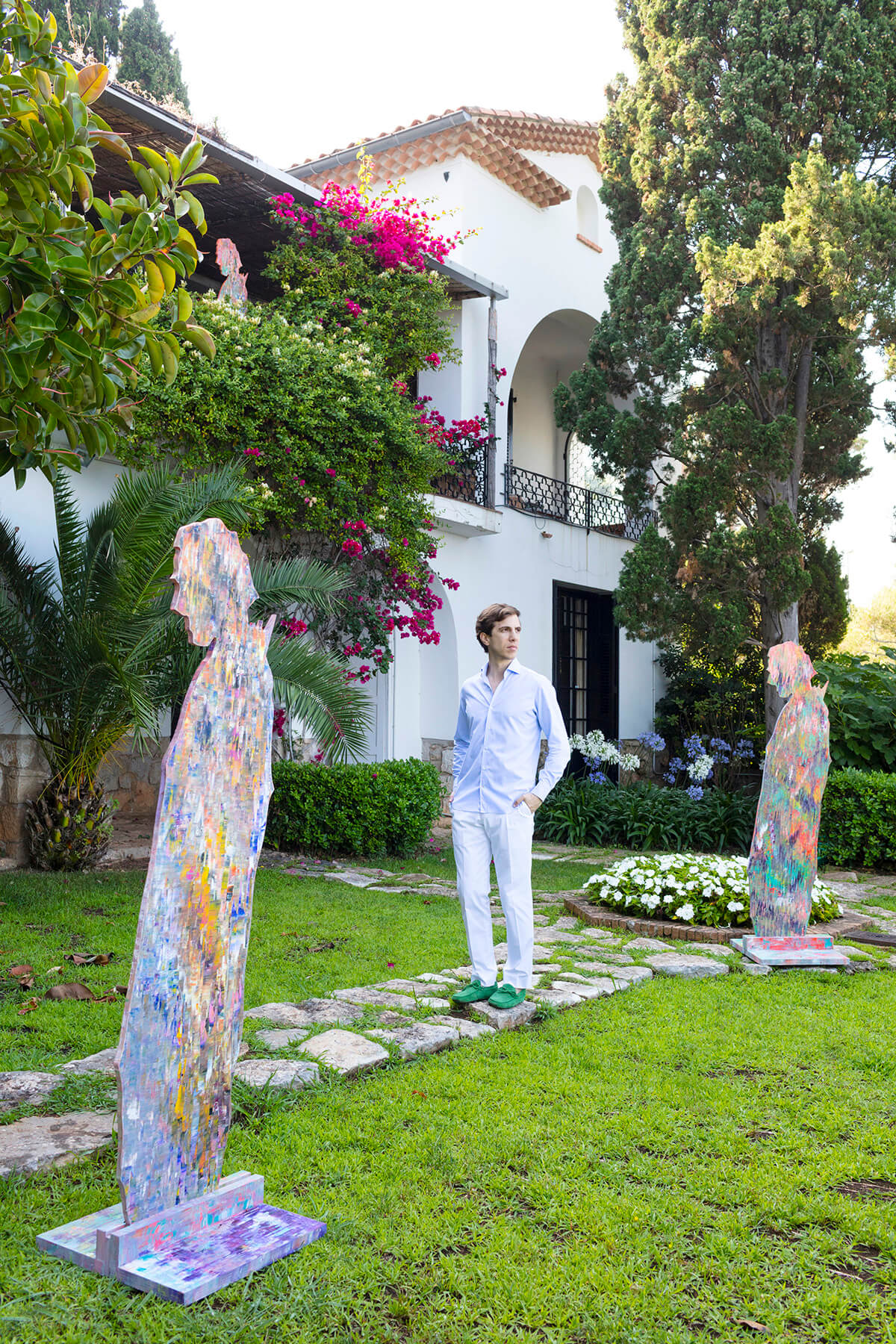
Daphne Selfe is the world’s oldest professional model. Instagram @daphneselfe
LUX contributing editor and model at Models 1, Charlie Newman continues her online exclusive series, interviewing her peers about their creative pursuits, passions and politics

Charlie Newman
THIS MONTH: It comes as no surprise that the world’s oldest professional model, Daphne Selfe, who turns 91 next month, ‘doesn’t do retiring’. The British model has clocked up over 70 years of experience, working for the likes of Olay, Eyeko, and Dolce and Gabbana, as well as posing for artists, making TV appearances and writing a memoir. This year, she was included in the Queen’s New Year Honours list and was awarded a British Empire Medal for her contribution to fashion, and whilst she no longer wears high heels, she can still do the splits. Here, she tells Charlie how she got into fashion, and why the Queen is her style icon.
Charlie Newman: Firstly, let’s talk about your upbringing – what was it like and how do you think it informed your choice of career?
Daphne Selfe: I spent most of my childhood in Berkshire until my parents moved to Hertfordshire. I always had an eye on fashion because my mother was very beautiful, smart and always made my clothes, but my true love was horses, I was mad on horses. I learnt to sew but I didn’t really get into fashion until I started working at Helles (what John Lewis was) in the coat department. At the store, there was a competition for the cover of a local magazine. All the girls, including myself, went to meet the photographer, and I won! It turned out the photographer was a royal photographer called Gilbert Adams and funnily enough he knew my parents from an amateur Opera society! The last time he saw me I was 2 years old, so when I turned up all 5ft 10 and a half of me aged 19, he really took me under his wing and taught me how to behave in front of a camera. I did lots of little odd jobs for him, assisting him for a while whilst working part time at Helles. The store then had a fashion show and the agency who were supplying the models was one short, so I was propelled onto the catwalk and thought, ‘Oh my god, what am I doing?’ After that they all said I should join the agency. In those days you had 3 weeks of training to be a model. Mummy thought this was a lot better than breaking a collarbone and being kicked in the head by horses so off I went!
Follow LUX on Instagram: the.official.lux.magazine
After 3 weeks training, I belonged to the agency. I met my husband, Jim, through Gilbert Adams, because he was the lighting technician of the ballet show we were working on. We didn’t get married straight away because he was busy travelling and I was busy with my dance school. I did my ballet training far too late, at 19 years old, but I assiduously learnt because ballet is the basis of all dance. I learnt from a very interesting choreographer called Buddy Bradley, who was well known in the twenties for having put on an amazing musical called Evergreen with Jessie Matthews. I joined his company because I could sew and help with the costumes and because I loved dancing! Of course nobody went abroad in those days, so when his little company went to Belgium, Rome and Madrid, I was delighted to go with them!
Then I decided Jim was the one, so I got married and in those days you didn’t work once you got married, so I retired and had three children but always kept up with my dance classes. Jim worked in television and one of his friends asked me if I would be an extra in The Arthur Haynes Show. Jim happened to be the stage manager that day, and he said ‘What on earth are you doing here?’ and I said ‘I’m working!’ He thought that was terribly funny, then from that I did more and more extra work, as well as fashion shows and commercials.

Instagram @daphneselfe
Charlie Newman: How did your modelling career continue into later life?
Daphne Selfe: I was doing my extra work and in 1999 when I was 70 my agency asked whether I would do a fashion show at London Fashion Week for Red or Dead. I love prancing about in nice clothes so of course I did it! The stylist on the show, Jo Phillips, called me up three months later and said Vogue are doing an article on ageing and suggested I get involved. At the shoot was the scout from Models 1 and I’ve been with them ever since, some 20 years later! I didn’t give up the extra work once I was signed with Models 1 because I know how the industry can like you one minute and not the next. But then I was getting more and more modelling work so I had to drop the extra work in the end.
Charlie Newman: What has been a career highlight for you?
Daphne Selfe: I think going abroad for the jobs is the best thing, because I would never have been able to afford that otherwise. I mean I’ve been to Australia, China, Japan, Africa. Whatever next!

Instagram @daphneselfe
Charlie Newman: Having worked throughout many fashionable decades, what do you think style means today?
Daphne Selfe: It doesn’t matter what time you live in, you must wear what suits you because then people will always admire you in it, it’s very important not to be driven by the trends of the moment.
Charlie Newman: In a dream world, who would you want to dress you and why?
Daphne Selfe: Currently, I love Roksanda Ilinic’s designs. I love going to Roksanda’s shows now and wearing her clothes at events, they always feel very fun and boost my confidence.
Charlie Newman: What advice would you give to young models starting out their careers?
Daphne Selfe: Taking care of your health is the most important thing because modelling is hard work if you do it properly. It’s long hours, lots of hanging about, lots of physical activity and also you need a good work ethic. In other words, that means be on time, don’t mess about once you’re there, and stay off your phone.
I was working with a Dutch photographer the other day and I was doing all my normal things; inventing poses, jumping around, all the usual. At the end he said to me ‘I’ve never worked with such an energetic model’ which did make me laugh! Just throw yourself into the shoot and give it everything.
Modelling can be horrendous too. I lost a big job the other day, but so what? It wasn’t my fault, it’s about what they want. It’s no good worrying about it, but I know a lot of people find that difficult. Being a model is very difficult if you don’t have much confidence because you have to put yourself in a room of people you don’t know and work with them effortlessly.

Instagram @daphneselfe
Charlie Newman: What keeps you happy and healthy?
Daphne Selfe: Well, I do a series of exercises most days, something along the lines of yoga, ballet, a little bit of weights but also static bicycle. Of course, I can’t do everything every day, but I do always do some stretching.
I suppose because I grew up in the war we never ate masses. We grew all our own fruit and vegetables so we had a very strict diet and that’s a mentality which never leaves you.
Charlie Newman: Who was your fashion icon when you were younger?
Daphne Selfe: I suppose in a way we always looked up to royalty, the young Queen, of course, was gorgeous. They all lived such glamorous lives, or so we thought. Whereas now, people don’t want to dress up anymore which I think is such a pity because I love dressing up!
Charlie Newman: Lastly, who is your role model of the month?
Daphne Selfe: It’s got to be the Queen, she’s absolutely fantastic! She always wears bright colours but is also discreet. I know of course she has money, but it really doesn’t cost a lot to look good. I’ve always made my own things and looked as good as anybody else.
Follow Daphne Selfe on Instagram:@daphneselfe


















Recent Comments